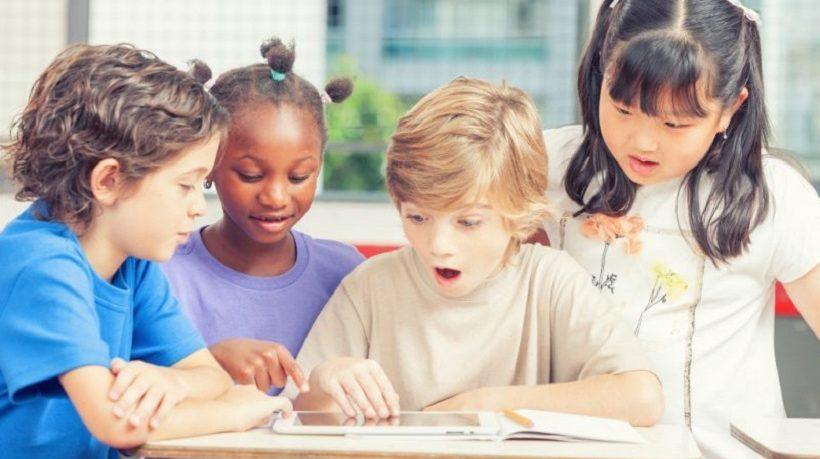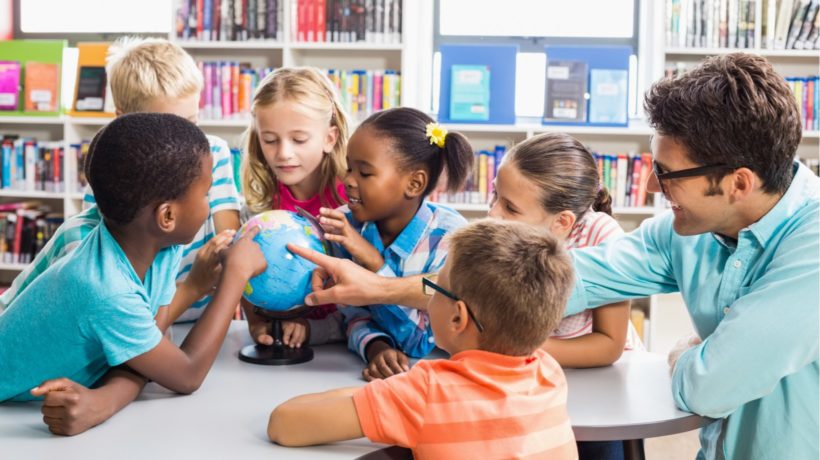What You Need To Know About Assistive Educational Technology
Children with disabilities have always had difficulties in achieving high educational goals in comparison with ordinary kids. Previously, such kids face a variety of challenges, as well as inequality, discrimination, and poverty in their lives as their chances to receive a proper education to earn their living were rather low. Development of assistive technology has changed that fact greatly as it can level both healthy kids and ones with mobility, sensory, and mental impairments. That provides disabled children with higher chances to adapt to modern life and feel equal in the different social groups. In addition, they can acquire new abilities using modern technological devices and overcome any obstacles that could be on their way to a happy life.
What Is Assistive Educational Technology?
Assistive educational technology has a rather broad definition as it encompasses various devices, equipment, and systems that are used to help students bypass, maintain, compensate, overcome, or enhance any learning deficits and capabilities of disabled students. It can’t substitute any physical, mental, or sensory problems, but at the same time it was created with the purpose to acquire new knowledge and skills by capitalizing on the child’s strengths and overcoming difficulty areas. That results in improving deficit of some skills and opens new horizons for young people. Moreover, that beneficially influences the child’s behavior, development, and character making him or her more self-reliant and independent.
Assistive edTech devices are divided into “high-tech” and “low-tech” ones. The latter ones are usually manually operated, while eLearning can be performed with the help of incredibly productive high-tech devices like computers, software, and other electronic equipment.
Statistics For Special Education Of Students/Children With Disabilities

Unfortunately, the number of disabled people and children, in particular, does not decrease with every passing year. The statistical data shows different numbers. According to UNICEF today each 10th child has some impairments. Moreover, over 10% of them do not attend school in low-income countries and between 5 and 15% of the kids can afford to obtain assistive technology themselves. That means that many other children require the help of world organizations for them to feel confident and equal.
The USA is one of the countries that tries to struggle with this problem. According to National Education Association, the number of pupils that require attending special programs has increased up to 30% for the last 10 years. That means that there are almost no classes without disabled pupils and three students out of four get a secondary education in these classes.
Types Of Learning Problem Assistive Technology (AT) Addresses

There are 5 main categories of people's disabilities including physical, sensory, cognitive, psychiatric, health-related, etc. According to the category, there are different problems faced by pupils in the process of getting the education. Here are some of the most widely spread challenges:
1. Listening
Children with deafness or hard-to-hear conditions as well as ones that have problems with spoken language may need AT.
2. Mathematics
Some kids have difficulty in computing, aligning, organizing and solving math tasks on the paper. Different AT can help them to cope with mathematics without a necessity to write everything down.
3. Writing
Depending on the disability type young people can require assistance with writing. Some AT was designed to circumvent the writing process while there are also apps and software that help to enhance spelling, pronunciation, punctuation and other.
4. Memory issues
Unfortunately, many kids follow behind their classmates because of insufficient memory. But modern AT can be useful for organizing and planning their schedule better. Moreover, they help to store, manage and retrieve vital information when it is necessary to memorize it better.
5. Reading
Disabled kids find it much more difficult to learn reading than ordinary children. The others are even unable to see what is typed on the paper. Modern AT can solve these and many other reading problems.
Benefits And Barriers Of Assistive Educational Technology
Choosing an AT for a child with certain impairments it is important to evaluate its benefits as well as determine the possible barriers and help a child to overcome them. Most of the assistive devices have the following benefits:
- Children feel more self-confident.
- It is easier and faster for a kid to realize his or her potential.
- AT gives a sense of independence.
- It makes children with disabilities be and feel equal to healthy classmates.
- It helps in daily living.
- Technology is a good encouragement for young learners.
Unfortunately, when children start using one or another AT they can experience a number of barriers such as:
- Additional discrimination from the side of their schoolmates.
- Negative attitude to the devices.
- Inaccessible destinations even being equipped with AT.
- The indifference of the society etc.
These barriers, which may seem not important, bring about more much severe life conditions. Girls get not only discriminated, but also abused. Children lose interest in any education, become obsessed with their impairments, and have to live in poverty until their death. Naturally, AT is very important for disabled youth, but its implementation should result only in benefits. That means that any barriers that might arouse should be eliminated before AT implementation.
Kinds Of AT Devices And Their Role In Inclusive Classrooms
The role of AT in education should not be underestimated. Fortunately, the technological breakthrough has greatly changed lives of disabled students for better and the variety of interesting and useful devices is incredibly big. Some of them seem magical as their functionality is rather wide. Apart from the customary voice recorders, headphones, screen readers, wheelchairs, there are numerous interesting innovations among them. The most impressive ones are the following:
- Text-to-voice devices, software, and talking calculators.
- Electronic worksheets, portable word processors, eBooks, audio books.
- Alternative keyboard and mouse.
- Free-form databases, graphic organizers, outlining software, personal data managers.
- Different low-tech solutions like highlighters, communication boards, note cards, etc.
All these edTech groups have many interesting tools, devices, and software, but here are the latest and most popular ones worth trying by pupils with impairments:
1. Intel Reader
It is a text-to-speech mobile device that reads printed text aloud. Student may make pauses and listen to the already read text again as the words are highlighted as soon as read. The decice can be accompanied by an Intel Portable Capture Station that can capture any text fragment from the book immediately.
2. Kurzweil 3000
It is a text-to-speech software that has numerous useful functions for pupils with literal difficulties. It can not only read out texts in multiple voices but also offers a big number of other interesting functions including support of 18 languages, a talking spell-checker, magnification, graphic dictionary and many extra tools that can contribute to learning process.
3. Jouse 3
Being a sip-and-puff system Jouse3 is used for controlling any device using your mouth, cheek, tongue, chin etc. It can be mounted to different surfaces and provides a number of useful functions.
4. Ginger
Students with dyslexia and other writing disorders would appreciate Ginger. It is a quality grammar checker that detects both errors and misspelling. There are also several additional functions like word prediction, sentence rephrasing, TTS function, a personal trainer to avoid previously made mistakes.
5. Ghotit
Ghotit was created for pupils, who challenge writing problems. The tool analyses previous student’s mistakes and makes personal suggestions for either grammar or spelling errors. Ghotit offers also word prediction, contextual check of passages, reading aloud, a dictionary etc.
6. MathTalk
MathTalk is software that recognises speech and math formulas. Math problems of different levels can be solved by software if pronounced into the microphone. There is also an integrated braille translator for children with visual difficulties. The program substitutes an electronic math worksheet.
7. SmartNav 4
SmartNav 4 substitutes a mouse for PC. There is an infrared scanner placed on the top of the screen. When you turn your head the device follows your motions and places the mouse pointer where you wish.
8. BrailleNote Apex
BrailleNote Apex is a kind of a PC for blind people. It does not have a LCD display, but there is a Braille display with raised buttons for readers to feel them. There is 8Gb of internal memory, two USB ports, a card reader, GPS receiver, Wi-Fi router etc. It has almost all the functions that are used by ordinary users, so is an indispensable device for people with poor eyesight.
The influence of AT on the education of disabled people is quite impressive. Some of the recently developed devices can make children with impairments decent members of the modern society preventing them from feeling insecure and distracted. A variety of modern gadgets that are used by ordinary people in everyday life also contributes to the education of different categories of children including ones with disabilities. Today AT can be called an indispensable part of their life that allows these kids feel confident and equal to others.









